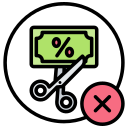
Essential Tax Deductions for Canadian Freelancers
Chosen theme: Essential Tax Deductions for Canadian Freelancers. Keep more of what you earn with practical, Canada-specific strategies, human stories, and clear steps. From workspace-in-the-home to mileage logs and meal rules, we’ll turn complicated rules into confident action. Have questions? Join the conversation and subscribe for fresh tax-savvy insights.
Workspace-in-the-Home: Carving Out a Deductible Studio
Measure the square footage used regularly and exclusively for business, or use a time-based approach if the space is shared. Mia, a Calgary copywriter, boosted her deduction by documenting hours of client work at her kitchen island turned studio—then kept photos for proof.


Workspace-in-the-Home: Carving Out a Deductible Studio
Include a reasonable share of heat, electricity, home insurance, maintenance, property taxes, mortgage interest, or rent—never double-counting anything. Track internet separately if it serves broader communications. Share your workspace method in the comments and help others fine-tune their percentage.

Start the year with your odometer reading and record each business trip’s date, destination, purpose, and kilometres. A digital log kept Aidan in Vancouver audit-ready and honest—he discovered 63% business use and confidently applied that ratio to vehicle costs.

Fuel, maintenance, insurance, license and registration, parking for business, lease payments or interest (within limits), and depreciation can be claimed proportionally. Keep every receipt and note the business-use percentage. Ask below if you’re unsure about choosing lease versus ownership for your situation.

Airfare, hotels, taxis, ride-shares, baggage fees, and reasonable tips related to business travel are eligible. Meals on trips are generally 50% deductible. Keep itineraries and agendas; they turn vague travel into credible business evidence. Share your best travel-record hack with the community.
Equipment, Tools, and Software: The Gear That Pays You Back
Write-Offs vs. Capital Cost Allowance (CCA)
Recurring software fees and small tools are typically deductible in the year paid. Larger assets like computers and cameras are depreciated using CCA over multiple years. Julien, a Montreal videographer, smoothed his tax bill by planning gear purchases around expected busy seasons.
Subscriptions and Cloud Tools
Project management apps, design suites, video editors, storage, and cybersecurity tools further your business and are generally deductible. Keep renewal emails and invoices. If a tool serves personal use too, document a reasonable business portion. Comment with your must-have app stack for tax season.
Proof of Purchase, Serial Numbers, and Warranties
Save receipts with serial numbers and warranty details; they help substantiate ownership and CCA claims. A photo of the product and its receipt stored in a dated folder makes future audits painless. Start a simple ‘Gear’ folder today and inspire others by sharing your system.




Accounting and Legal Fees
Bookkeeping help, tax preparation for your business, and legal advice related to contracts or collections are deductible. Sam in Halifax recovered a major overdue invoice after a lawyer’s letter—then deducted the fee as a business expense. Ask below if you’re unsure about categorizing professional costs.
Courses That Enhance Current Skills
Training that updates or improves your existing services is usually deductible, while programs that create a new line of business may be treated differently. Keep syllabi and proof of relevance. Share a course that paid for itself through better rates or new clients.
Dues, Memberships, and Insurance
Professional association dues, business liability or errors-and-omissions insurance, and certain certification renewals can be deducted. Keep renewal notices and policy documents. Post your go-to association in the comments so newcomers discover helpful communities.
When to Register
Most freelancers must register when worldwide taxable supplies exceed the $30,000 small supplier threshold in a 12-month period. Voluntary registration can make sense earlier to claim input tax credits. Tell us when you registered and what changed in your workflow.
Input Tax Credits vs. Deductions
ITCs recover GST/HST paid on eligible business purchases, reducing net sales tax owing, while deductions lower your income for income tax. Track the tax on each receipt accurately. A tidy spreadsheet can rescue hours at filing time.
Invoicing Habits That Help
Show your GST/HST number, clearly separate tax from price, and note the applicable rate by province if relevant. Consistent formatting builds client trust and simplifies reconciliations. Share an invoice template tip that made collections smoother for you.
Bank and Payment Processing Fees
Monthly account charges, e-transfer fees, and merchant processing costs linked to your business are deductible. A separate business account keeps records clean. Drop a comment if you’ve found a low-fee provider that plays nicely with freelancer cash flow.
Interest on Business Loans or Credit
Interest on funds borrowed for business purposes can be deductible within limits. Keep loan agreements and note the business reason for each purchase. Labeling transactions right away helps future-you avoid painful sorting in April.
Writing Off Bad Debts
If a client won’t pay despite reasonable collection efforts, you may write off the invoice as a bad debt. Document emails, demand letters, and dates. Priya in Toronto recovered peace of mind by setting a firm policy—then sharing it with her subscribers.

CPP, RRSP, and Year-End Moves: Freelance-Specific Tax Levers
How CPP Works for the Self-Employed
You pay both the employee and employer portions on your net self-employment income. Typically, you can deduct half and claim a credit for the other half. Set aside cash quarterly so instalments don’t sting. Share your budgeting trick with the group.
RRSP Contributions to Balance Income
Strong year? RRSP contributions can reduce taxable income and create a buffer for slower seasons. Track contribution room and deadlines. One Edmonton illustrator sets automatic transfers each month, then tops up after her holiday rush—smart and stress-free.
Plan Ahead to Avoid Surprises
Use a separate tax savings account, automate transfers, and review quarterly. Reconciling early uncovers missing receipts while they’re still findable. If this checklist helps, subscribe for our quarterly tax reminders tailored to Canadian freelancers.
